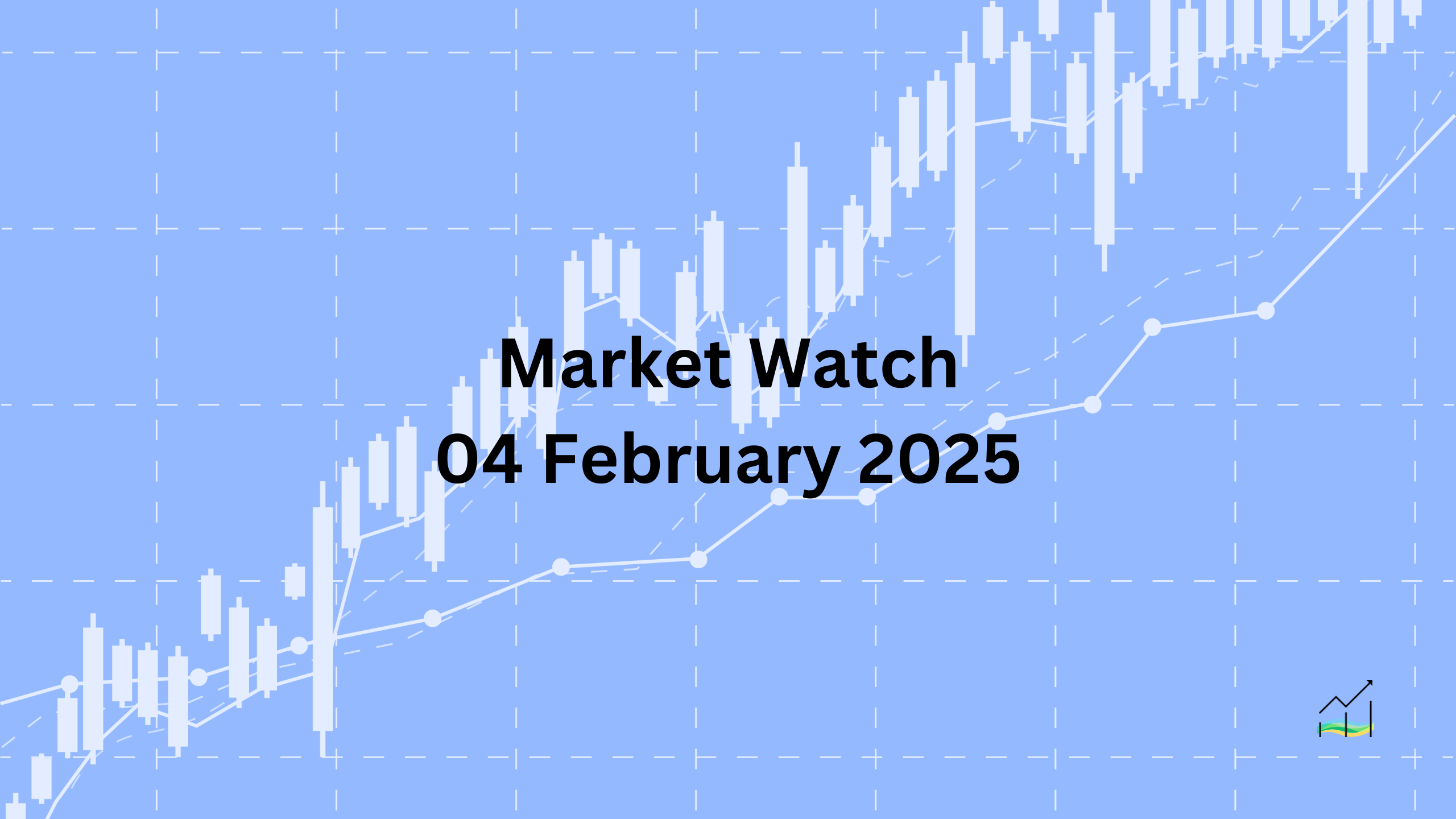04/02/2025 Market Watch

Market Stabilizes After Volatility, Dollar Holds Firm
After yesterday’s sharp market swings, the foreign exchange market has settled into a more stable tone. The US dollar remains firm after losses tied to the postponement of tariffs on Mexico and Canada, which came with only minor concessions. However, Canada’s fentanyl czar has not been extended. Meanwhile, the 10% tariffs on China have been implemented, but Beijing’s measured response suggests room for further negotiations.
Beyond geopolitical developments, markets are also looking ahead to key economic data. The US quarterly refunding announcement is set for tomorrow, followed by the closely watched jobs report on Friday, which includes annual benchmark revisions. Against major currencies, the dollar is mostly stronger, while it remains mixed against emerging market currencies. Asia-Pacific currencies are generally firmer, whereas some central European currencies and the Mexican peso have softened slightly.
In equities, Asia-Pacific markets rebounded after yesterday’s losses. Hong Kong’s market surged 2.8%, with Chinese stocks listed there climbing 3.5%. Australia was an exception, slipping slightly. In Europe, the Stoxx 600 is trading with a softer tone, while US index futures are also under mild pressure. Bond yields have edged higher, with European benchmark yields rising 2-5 basis points, and the US 10-year Treasury yield up nearly two basis points to around 4.58%.
Commodities are showing mixed movements. Gold is hovering just below its record high of nearly $2,831 set yesterday. Meanwhile, oil prices remain under pressure, with March WTI approaching last month’s low near $71.30. It is currently trading below its 200-day moving average of approximately $72.05, a level it has not closed beneath since late December.
United States of America
Overview
The opening gap in the forex market was closed yesterday after the US postponed tariffs on Mexico and Canada for a month. Despite this, the Dollar Index remained strong, settling above its pre-weekend high of 108.55. However, in today’s European session, the index is trading near the lower half of yesterday’s range, hovering around 108.35, with nearby support at 108.00.
Economic Drivers
The impact of the initial GDP estimate and the postponed tariffs is shaping market sentiment. Today’s data releases, including December’s JOLTS report, factory orders, and final durable goods orders, are unlikely to generate significant market reactions. Investors remain focused on broader economic shifts rather than short-term reports.
Data and Events
The futures market continues to price in the first Fed rate cut around mid-year, with an 80% probability for June 18 and near certainty for July 30. However, expectations for a second cut later this year have declined, with the probability dropping from nearly 100% last week to about 67% now. Fed Governor Jefferson, along with regional Fed presidents Daly and Bostic, are set to speak today, but the general stance remains one of holding rates steady.
Price Action
The dollar remains resilient despite the delay in tariffs. The Dollar Index is trading within a narrow range, with 108.35 acting as intraday support. If it breaks lower, the next key level is 108.00. Market participants continue to monitor interest rate expectations and Fed policy guidance for further direction.
Key Points:
- Dollar Index remains above 108.00 despite tariff delays.
- Rate cut expectations remain firm for June but have weakened for a second cut in 2024.
- Today’s data releases (JOLTS, factory orders, durable goods) are unlikely to drive market moves.
- Fed officials speaking today are expected to maintain a steady stance on rates.
Australia
Overview
The Australian dollar rebounded from a brief dip below $0.6090, climbing to $0.6235 following the delay in US tariffs on Mexico. However, it remains below yesterday’s high and is struggling to maintain levels above $0.6200.
Economic Drivers
Australia’s economy showed slightly stronger-than-expected consumer activity, with household spending rising 0.4% in December. While positive, this has not significantly altered market sentiment toward the currency.
Data and Events
Markets remain confident that the Reserve Bank of Australia will begin its easing cycle later this month, with futures pricing in a 93% chance of a rate cut. The swaps market is also factoring in around 85 basis points of cuts over the next 12 months.
Price Action
Technical indicators signal bearish momentum. Daily momentum indicators have turned lower, and the five-day moving average has crossed below the 20-day moving average, suggesting continued downside pressure.
Key Points:
- AUD rebounded but is struggling to hold above $0.6200.
- Household spending rose 0.4% in December, slightly exceeding expectations.
- Markets expect rate cuts, with a 93% probability of easing this month.
- Bearish technical signals, as short-term moving averages turn lower.
Canada
Overview
The US dollar surged to nearly CAD1.48 in the Asia-Pacific session before gradually retreating. It dropped sharply to CAD1.4390 after Mexico’s president announced a one-month delay in US tariffs. The dollar briefly recovered to CAD1.45 as tariffs on China took effect but has since pulled back to around CAD1.4420 in the European session.
Economic Drivers
The Canadian dollar’s strength was driven by shifting trade dynamics following the tariff delay. The US dollar’s movement also reflects broader risk sentiment and market positioning amid ongoing trade policy developments.
Data and Events
US-Canada yield spreads remain in focus. The US two-year yield premium over Canada, which ended last week near 155 basis points, has widened to around 158 basis points. The 10-year spread reached a record 148 basis points yesterday and is now pushing above 150 basis points, reinforcing interest rate differentials as a key driver.
Price Action
The CAD1.4380–CAD1.4400 zone appears to be a strong support area. If the US dollar holds above this range, a retest of CAD1.45 is possible. However, a break lower could signal further downside.
Key Points:
- US dollar surged to CAD1.48 before dropping on tariff delay news.
- Rebounded to CAD1.45 as China tariffs took effect but pulled back to CAD1.4420.
- Yield spreads favor the US, with the two-year premium rising to 158 basis points.
- CAD1.4380–CAD1.4400 is key support, with resistance near CAD1.45.
China
Overview
China responded to the US 10% tariff increase with measured actions, targeting specific companies and imposing a 15% tariff on nearly $5 billion worth of US energy exports, along with a 10% tax on American oil and agricultural equipment. The delayed implementation until February 10 suggests room for further negotiations.
Economic Drivers
By keeping its countermeasures relatively moderate, China appears to be leaving the door open for discussions. The targeted approach limits escalation, focusing on key sectors rather than imposing broad-based retaliation.
Data and Events
Mainland Chinese markets reopen tomorrow, and investors are awaiting the release of Caixin Services and Composite PMI data, which could offer insight into economic conditions. These figures will help shape expectations for future policy responses.
Price Action
The US dollar initially surged against the offshore yuan, reaching nearly CNH7.3735 after gapping higher. However, news of the US tariff delay led to a retreat, closing the gap near CNH7.30. Today, the dollar briefly rose to CNH7.3365 before reversing lower, now trading near CNH7.29 in European trade.
Key Points:
- China imposed selective tariffs of 15% on US energy and 10% on oil/agriculture equipment.
- February 10 start date signals room for further negotiations.
- Mainland markets reopen tomorrow, with key PMI data due.
- USD/CNH volatility, with the pair surging to CNH7.3735 before retreating to CNH7.29.
Europe
Overview
The euro experienced sharp moves following the announcement of a possible US tariff delay. After gapping lower and hitting $1.0140 in illiquid trading, it rebounded to $1.0290 during early North American hours. The rally extended to $1.0350 on tariff delay news, effectively closing the gap. However, as US tariffs on China took effect, the euro pulled back to $1.0270 before recovering to retest $1.0350.
Economic Drivers
The euro’s movement has been heavily influenced by US tariff developments. Initial losses were driven by concerns over economic fallout, but optimism returned as news of a possible delay emerged.
Data and Events
France’s government faces a confidence vote tomorrow, with the Socialist party playing a crucial role. Their stance remains uncertain, adding a layer of political risk to the euro’s outlook.
Price Action
- The euro gapped lower to $1.0140 before recovering.
- Peaked at $1.0350 but pulled back as US tariffs on China took effect.
- The five-day moving average is set to cross below the 20-day, signaling possible further downside.
Key Points:
- The euro rebounded from $1.0140 to $1.0350, closing the gap.
- US tariffs on China triggered another decline to $1.0270 before a partial recovery.
- Technical indicators suggest renewed selling pressure in North America.
- France’s confidence vote tomorrow adds political uncertainty.
Japan
Overview
The Japanese yen was the best-performing G10 currency yesterday, strengthening by about 0.3% against the US dollar. While some unwinding of short yen carry trades may have contributed, the primary driver was likely the decline in US 10-year yields. The yen’s movement closely tracked the US yield fluctuations, particularly during the European and North American sessions.
Economic Drivers
The drop in US Treasury yields played a significant role in the yen’s strength. The US 10-year yield, which had peaked near 4.58%, dipped below 4.50%, supporting the yen. However, near-term risks point to higher US yields, which could limit further yen gains. Stronger-than-expected US manufacturing ISM data pushed the Atlanta Fed’s GDP tracker above 3%, reinforcing expectations for firm economic growth. Additionally, the upcoming quarterly US Treasury refunding announcement adds another layer of market anticipation, as potential shifts in debt issuance strategy could impact yields and currency flows.
Data and Events
Japan will release its December labor earnings report and final services and composite PMI data tomorrow. These figures will provide insights into the country’s economic health and could influence the yen’s near-term direction. In the US, the Treasury’s refunding announcement is in focus, as market participants assess potential changes in issuance structure under the new administration.
Price Action
The US dollar briefly broke above its uptrend line near JPY155.65 before retreating to session lows around JPY154.00. Currently, it is trading within a JPY155.00–JPY155.50 range. If US yields rebound, the dollar could regain strength against the yen.
Key Points:
- The yen was the strongest G10 currency, gaining 0.3% against the dollar.
- US 10-year yield decline supported the yen, but near-term risks point to higher rates.
- Strong US manufacturing ISM data pushed GDP forecasts above 3%.
- Japan's labor earnings and PMI data are due tomorrow.
- USD/JPY remains in a JPY155.00–JPY155.50 range, with resistance near JPY155.65.
United Kingdom
Overview
Despite market volatility, expectations remain strong (~98%) that the Bank of England (BoE) will cut rates later this week. The swaps market is pricing in three rate cuts this year, with a small chance of a fourth. Unlike many other currencies, the British pound did not gap lower but still dropped to $1.2250, a nine-session low, before rebounding to $1.2455 following the tariff delay announcement.
Economic Drivers
The primary focus is on the BoE’s upcoming policy decision, with markets firmly convinced of a rate cut. The expected easing stance contrasts with the broader global outlook, where central banks remain cautious. Meanwhile, discrepancies persist in US-UK trade data—US figures show a small trade surplus with the UK, while UK data reports the opposite. This misalignment underscores the complexities in trade reporting between the two nations.
Data and Events
The BoE’s rate decision later this week remains the most critical event, with markets closely watching for guidance on future policy moves. Any shift in tone could influence expectations regarding additional cuts this year.
Price Action
Sterling found support above $1.2380 after its rebound from $1.2250. However, it has struggled to break past $1.2455 and now faces nearby resistance at $1.2475. The broader outlook remains tied to the BoE’s policy decision and market reaction to rate expectations.
Key Points:
- Markets expect (~98%) a BoE rate cut this week, with three cuts priced in for the year.
- Sterling fell to $1.2250 before recovering to $1.2455 after the tariff delay.
- Discrepancies exist in US-UK trade balance data.
- The BoE’s policy announcement remains the key event this week.
- GBP/USD faces resistance near $1.2475, with support at $1.2380.
© 2025 SKONE Enterprise (003319453-V). All rights reserved.
The content on this site is for informational purposes only and does not constitute financial advice.


